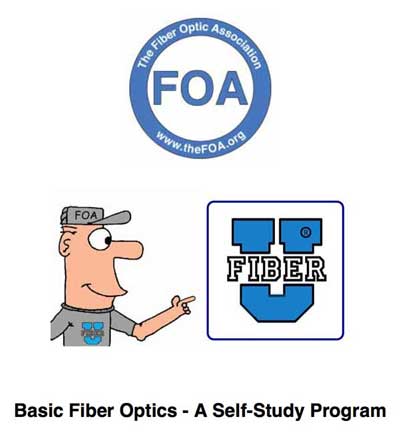Lesson #10, Fiber Optic Installation
FOA Reference Guide To Fiber Optics
And Study Guide To FOA Certification

Answers To Chapter Questions
Chapter 10 Quiz - Installation
TRUE/FALSE
1. ANS: T
Electrical noise is often a problem in industrial applications and fiber's immunity is most important.
2. ANS: T
For electrical safety, all conductive parts of the system, including hardware, must be properly grounded and bonded.
3. ANS: F
NEC requires removal of abandoned cables as fire hazards.
MULTIPLE CHOICE
4. ANS: D
Cable
documentation should be started before installation so the installation
is properly documented and ready for labeling and recording test data.
Documentation will facilitate installation, allow planning for upgrades
and provide data needed for restoration.
5. ANS: D
OSP cables are installed in all these ways which are quite different in process.
6. ANS: A
Eye protection is needed for all installers to prevent fiber scraps from harming the eyes.
7. ANS: B
The rod stiffens the cable to prevent kinking.
8. ANS: A
Pulling ropes sometimes unwind under tension so the swivel prevents it causing cable twists.
9. ANS: D
Each
coil in the "figure 8" puts a half-twist into the cable then does a
half-twist in the opposite direction to remove any twisting.
10. ANS: C
The guidelines are 20 times the cable diameter under tension, 10 times under no pulling tension.
11. ANS: A
TIA 568, the standard for commercial cabling, covers fiber and copper cabling.
12. ANS: C
The TIA-568 star architecture supports LAN architectures and most other types of equipment connections.
13. ANS: D
Dropping cables from above reduces the stress on the cable and is easier on the installer.
14. ANS: D
Tightening
cable ties can put harmful stress on the fibers (or pairs in UTP copper
cables), so hand tighten them and cut off the excess length. Even
better, use soft "hook and loop" ties that can be reopened to move
cables.
Return to Lesson Plan
|

